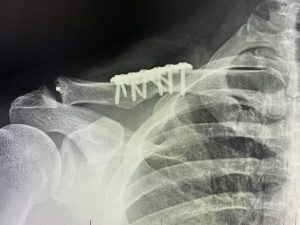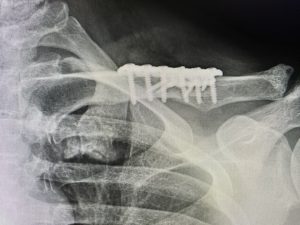Chin implants are a very commonly used method of facial augmentation that has been around for fifty years. Despite this long history and common use there continues to be a lack of understanding of the gender differences between the male and female chin and how to select a successful chin implant for them.
In shoulder narrowing surgery a specified length of the clavicle is removed to reshape the outer shoulders. The single most important step in the procedure is stabilizing the shortened clavicle with plates and screws to hold it together as it heals. There has yet to be specific biomechanical studies to evaluate what the best method of plate and screw fixation needed to optimize healing in a straight cut clavicle bone realignment. Thus we have to refer to clavicle fracture repair methods to determine the best fixation method. (although this is not an exact correlation)
In clavicle fracture repair applying a superior plate with bicortical screws is acknowledged as the most important fixation location to resist displacement from arm abduction. This has been transferred to clavicle osteotomy fixation with a 3.5mm superior plate with three bicortical screws on each side. Intraoperatively this fixation feels very stout and seems like it would be more than adequate,

But double plate fixation of a clavicle osteotomy is not without its potential concerns. In the relatively small diameter of the clavicle 8 or 10 screws in and around the osteotomy site runs some risk of impairing the vascularity of the bone around the osteotomy site. This may result in incomplete healing which may not be revealed unless the fixation devices are secondarily removed and the bone must bear full stress leading.
For now in cases of higher soft tissue loading on the clavicle the risk of delayed or incomplete osteotomy healing due to decreased bone flow appears to be less than the more short term risk of fixation failure and the need for secondary surgery for repair.
Dr. Barry Eppley
World-Renowned Plastic Surgeon





